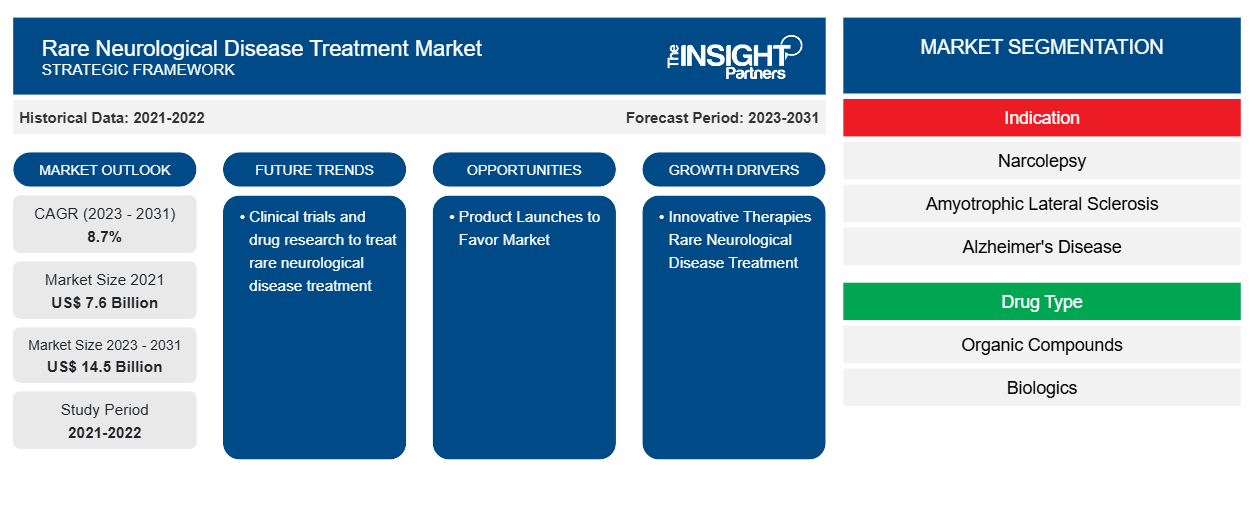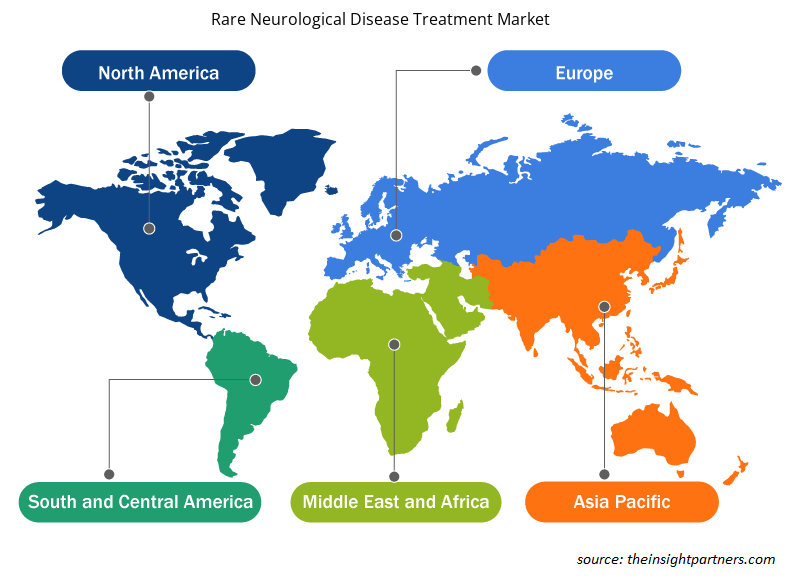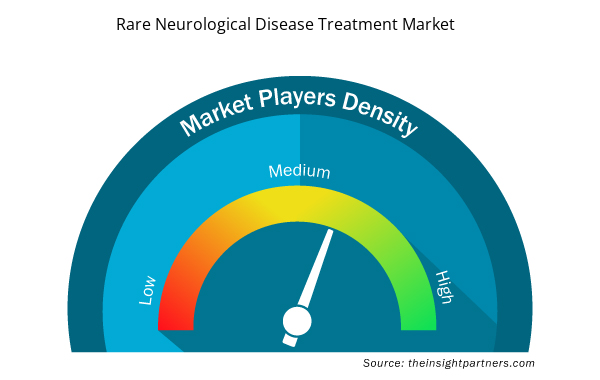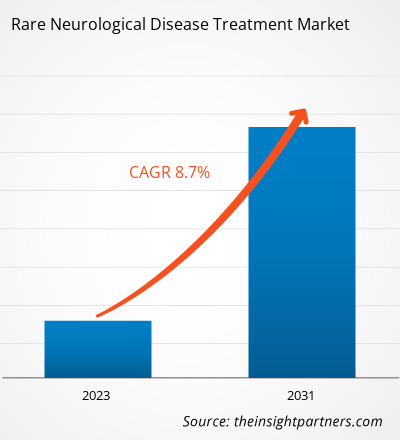The Rare Neurological Disease TreatmentMarket was valued at US$ 7.6 billion in 2021 and is expected to reach US$ 14.5 billion by 2031. The market is expected to register a CAGR of 8.7% from 2023–2031. Clinical trials and drug research to treat rare neurological disease treatment is likely to remain key Rare Neurological Disease Treatment Market trends.
Rare Neurological Disease TreatmentMarket Analysis
Innovative Therapies Rare Neurological Disease Treatment
Centre for Drug Evaluation and Research (CDER) announced in 2023 approval for the first enzyme replacement therapy to treat non-neurological effects of alpha-mannosidosis (a rare genetic lysosomal storage disorder). Additionally, in March 2024, a clinical study found that an investigational gene therapy may help patients with rare neurodegenerative disease. Further, in May 2022, the Accelerating Rare Disease Cures (ARC) Program was established to drive scientific and regulatory innovation and engagement to accelerate the availability of treatment for patients with rare diseases. The FDA will leverage the ARC Program's infrastructure, expertise, and strategic leadership to establish an inter-centre Rare Neurodegenerative Diseases Task Force. The aforementioned factors are responsible for influential rare neurological disease treatment market growth during 2021-2031.
Rare Neurological Disease TreatmentMarket Overview
Technology, innovation, and smart technological solutions such as continue to influence rare neurological disease treatment market significantly. Innovative therapies rare neurological disease treatment and product launches are the most influential factors responsible for Rare Neurological Disease Treatment Market growth. Clinical trials and drug research to treat rare neurological disease treatment is a key trend for Rare Neurological Disease Treatment Market growth. Rising Research & Development (R&D) activities will provide lucrative market opportunity.
Customize This Report To Suit Your Requirement
You will get customization on any report - free of charge - including parts of this report, or country-level analysis, Excel Data pack, as well as avail great offers and discounts for start-ups & universities
Rare Neurological Disease Treatment Market: Strategic Insights

- Get Top Key Market Trends of this report.This FREE sample will include data analysis, ranging from market trends to estimates and forecasts.
You will get customization on any report - free of charge - including parts of this report, or country-level analysis, Excel Data pack, as well as avail great offers and discounts for start-ups & universities
Rare Neurological Disease Treatment Market: Strategic Insights

- Get Top Key Market Trends of this report.This FREE sample will include data analysis, ranging from market trends to estimates and forecasts.
Rare Neurological Disease TreatmentMarket Drivers and Opportunities
Product Launches to Favor Market
In November 2022, CENTOGENE announced launching of "Biodata Network" a portfolio of data-driven rare and neurodegenerative diseases for biopharma and research institutes. Additionally, CENTOGENE datasets represents an estimated 20% increase in both breadth and depth of genomic data currently available through BC platforms. This dataset reflects a diverse geographic and ethnic sample base including prevalence of paediatric cases suffering from rare and neurodegenerative diseases including clinical, multiomic, and socio-demographic data. Therefore, such innovative product launching datasets for rare neurological disease treatment will contribute significantly in the coming years.
Rising Research & Development (R&D) Activities– An Opportunity
- In December 2023, The Food and Drug Administration (FDA) announced grants and contracts to public and private entities covering the cost of research and development (R&D) to prevent, diagnose, mitigate, treat, and cure Amyotrophic lateral sclerosis (ALS) and other rate neurodegenerative diseases in adults and children.
- In June 2023, Ipsen and Medentia announced a collaboration for extensive drug discovery and medicinal chemistry. Through this collaboration, the companies will collectively bring new solutions to people worldwide, focusing on rare diseases, including rare neurodegenerative diseases.
Therefore, rising R&D activities will provide lucrative market opportunities accounting considerable market share in the coming years for Rare Neurological Disease Treatmentmarket.
Rare Neurological Disease Treatment
Market Report Segmentation Analysis
Key segments that contributed to the derivation of the Rare Neurological Disease Treatment Market analysis are candidature and services.
- Based on Indication, the Rare Neurological Disease Treatment Market is segmented into narcolepsy, amyotrophic lateral sclerosis, Alzheimer’s disease, multiple sclerosis, spinal muscular atrophy, Duchenne muscular dystrophy, and others. The Alzheimer’s disease may hold a larger market share in 2023.
- Based on Drug Type, the Rare Neurological Disease Treatment Market is bifurcated into organic compounds and biologics. The biologics may hold a larger market share in 2023.
- Based on Mode of Administration, the Rare Neurological Disease Treatment Market is bifurcated into Oral and Injectable. The Oral segment may hold a larger market share in 2023.
- Based on Distribution Channel, the Rare Neurological Disease Treatment Market is segmented as Hospital Pharmacies, Retail Pharmacies, and Others. The Hospital Pharmacies segment may hold a larger market share in 2023.
Rare Neurological Disease Treatment Market Share Analysis by Geography
The geographic scope of the Rare Neurological Disease TreatmentMarket report is mainly divided into five regions: North America, Asia Pacific, Europe, Middle East & Africa, and South America/South & Central America.
North America has dominated the Rare Neurological Disease Treatment Market. In North America, US accounts considerable share for rare neurological disease treatment. Presence of top manufacturers present in the US and increasing R&D activities are the most influential factors responsible for market growth. Asia Pacific is anticipated to grow with the highest CAGR in the coming years.
Rare Neurological Disease Treatment
Rare Neurological Disease Treatment Market Regional Insights
The regional trends and factors influencing the Rare Neurological Disease Treatment Market throughout the forecast period have been thoroughly explained by the analysts at Insight Partners. This section also discusses Rare Neurological Disease Treatment Market segments and geography across North America, Europe, Asia Pacific, Middle East and Africa, and South and Central America.

- Get the Regional Specific Data for Rare Neurological Disease Treatment Market
Rare Neurological Disease Treatment Market Report Scope
| Report Attribute | Details |
|---|---|
| Market size in 2021 | US$ 7.6 Billion |
| Market Size by 2031 | US$ 14.5 Billion |
| Global CAGR (2023 - 2031) | 8.7% |
| Historical Data | 2021-2022 |
| Forecast period | 2023-2031 |
| Segments Covered |
By Indication
|
| Regions and Countries Covered | North America
|
| Market leaders and key company profiles |
Rare Neurological Disease Treatment Market Players Density: Understanding Its Impact on Business Dynamics
The Rare Neurological Disease Treatment Market is growing rapidly, driven by increasing end-user demand due to factors such as evolving consumer preferences, technological advancements, and greater awareness of the product's benefits. As demand rises, businesses are expanding their offerings, innovating to meet consumer needs, and capitalizing on emerging trends, which further fuels market growth.
Market players density refers to the distribution of firms or companies operating within a particular market or industry. It indicates how many competitors (market players) are present in a given market space relative to its size or total market value.
Major Companies operating in the Rare Neurological Disease Treatment Market are:
- Allergan (AbbVie) Inc.,
- Bayer AG,
- GlaxoSmithKline plc,
- Johnson & Johnson Services, Inc.,
- Merck & Co., Inc.,
- Novartis,
Disclaimer: The companies listed above are not ranked in any particular order.

- Get the Rare Neurological Disease Treatment Market top key players overview
Rare Neurological Disease TreatmentMarket News and Recent Developments
The Rare Neurological Disease TreatmentMarket is evaluated by gathering qualitative and quantitative data post primary and secondary research, which includes important corporate publications, association data, and databases. The following is a list of developments in them market for Rare Neurological Disease Treatment and strategies:
- In September 2022, the US Food and Drug Administration (USFDA) and the National Institute of Health (NIH) announced the launching of the "Critical Path for Rare Neurodegenerative Diseases (CP-RND)," a public-private partnership aiming to advance the understanding of neurodegenerative diseases that foster the development of treatments for amyotrophiclateral sclerosis (ALS) and other rare neurodegenerative diseases.
Rare Neurological Disease TreatmentMarket Report Coverage and Deliverables
The “Rare Neurological Disease TreatmentMarket Size and Forecast (2021–2031)” report provides a detailed analysis of the market covering below areas:
- Market size and forecast at global, regional, and country levels for all the key market segments covered under the scope
- Market dynamics such as drivers, restraints, and key opportunities
- Key future trends
- Detailed PEST/Porter’s Five Forces and SWOT analysis
- Global and regional market analysis covering key market trends, major players, regulations, and recent market developments
- Industry landscape and competition analysis covering market concentration, heat map analysis, prominent players, and recent developments
- Detailed company profiles
- Historical Analysis (2 Years), Base Year, Forecast (7 Years) with CAGR
- PEST and SWOT Analysis
- Market Size Value / Volume - Global, Regional, Country
- Industry and Competitive Landscape
- Excel Dataset



Report Coverage
Revenue forecast, Company Analysis, Industry landscape, Growth factors, and Trends

Segment Covered
Indication ; Drug Type ; Distribution Channel ; Mode of Administration and Geography

Regional Scope
North America, Europe, Asia Pacific, Middle East & Africa, South & Central America

Country Scope
Argentina, Australia, Brazil, Canada, China, France, Germany, India, Italy, Japan, Mexico, Saudi Arabia, South Africa, South Korea, Spain, United Arab Emirates, United Kingdom, United States

 Get Free Sample For
Get Free Sample For